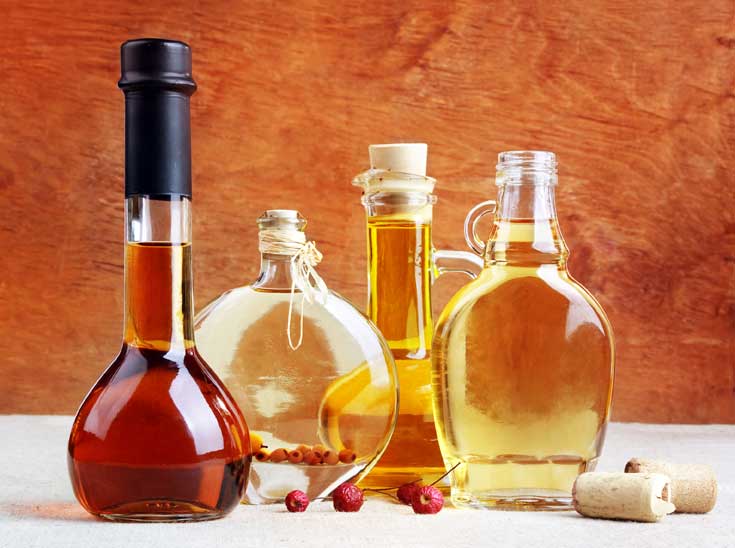Infusing your own spirits at home is easy, and the result makes for a thoughtful festive gift
Infused spirits have become popular in recent years as bars pursue a more bespoke approach to their cocktails, with establishments offering everything from tea infused gins to chocolate vodkas. It’s a trend that can be easily replicated at home—all you need is a bottle of spirits, a kilner jar, some muslin or cheesecloth and your flavouring of choice.
In theory, all spirits can be infused although it’s generally easier to use white spirits, as the flavour tends to be plainer, making it easy to pair with different ingredients. Spirits such as whiskey and dark rum have more complex flavours, meaning you’ll have to think more carefully about what you can use to infuse.
While a good rule of thumb is to buy the best that you can afford, be wary of premium brands that may have their own complex flavourings. Many expensive gins, for example, are already flavoured with an intricate array of botanicals that could be spoilt if you marry them with an ingredient that clashes.
To start with, opt for a good quality spirit that’s neutral in taste, so you have a clean canvas for your experiments. It’s also a good idea to use a small amount of spirits first so you don’t waste a whole bottle on an ill-judged recipe.
How it works
We recommend using a large Kilner-style or screw-top jar for your project— it will need to be spotlessly clean before use, so that your infusion doesn’t spoil. When preparing your ingredients, chop large fruits and vegetables roughly into pieces but leave small fruits and spices whole. Mix your ingredients and the spirit together in the jar (if you’d like a sweeter result that tastes more like a liqueur, add a little sugar to the mixture), tightly seal and store in a cool, dark place.
Alcohol is good at extracting the flavour from ingredients, so leaving something to infuse for a long time will not necessarily give a better result—weeks spent infusing chilli in vodka, for example, will make the spirit far too spicy to drink. As a rough guide, potent ingredients like chilli only need infusing for a few hours, while berries will need at least a few weeks—allow roughly 200 to 400 grams per litre of spirit. In between these, herbs and spices will take a few days while florals and mild fruits like apple can take up to a month. The flavour will intensify the longer you leave it, so make sure you taste regularly to check you’re happy with how it’s progressing, and give the jar a good shake every now and then. Once you’re happy with the final result, strain the spirit through a piece of muslin to remove solids and sediment, and seal in sterilised bottles.
See also: What are Tequila’s Native Flavours?
What goes with what?
Gin
Infusing gin requires careful thought because it’s a spirit with complex flavourings. Look carefully at what botanicals are listed on the label and match your flavours to those. Hendrick’s Gin, for example, is subtly flavoured with cucumber and rose so infusing it with either of these botanicals would complement the gin nicely. Other ingredients that would match with gin include citrus fruits, florals (such as rose or elderflower), Earl Grey tea, herbs like fennel or basil and spices such as cardamom.
Vodka
As a neutral spirit vodka is the perfect blank canvas for big, gutsy flavours. Ideal partners include chilli, vanilla, citrus, peppercorns, celery, ginger, cherry and pear.
Tequila
Tequila works well with big and tropical flavours—try chilli, citrus, melon, or mango. Pineapple and jalapeño is a particularly good combination. Choose a light, unaged tequila as the flavours will be simpler and easier to work with.
Rum
Rums can vary in colour from clear to very dark, and the lighter the rum the easier it is to infuse. For white rum, echo the fresh, summery flavours of a mojito by infusing it with lots of fresh mint or steep fresh pineapple and coconut for a Piña Colada-style infusion. For darker or aged rum try spices like cinnamon, nutmeg, cloves and allspice.
Whiskey
Whiskey covers a wide range of different creations, all with very different flavor profiles, making this a tricky spirit to handle. Opt for milder whiskies (certain bourbons, Canadian and Irish whiskies would suit) and pick autumnal fruits like apples, plums and blackberry. Chocolate, nuts, vanilla and coffee also pair well with whiskey.
Read more on The Master Chefs about what makes vodka a versatile drink this season.



